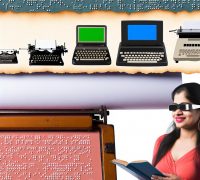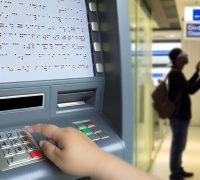The Origins of Braille
The origins of Braille technology are rooted in the remarkable story of Louis Braille, a visionary who made an indelible mark on the way individuals with visual impairments engage with written language. Born in 1809 in Coupvray, France, Louis Braille lost his sight at the tender age of three due to a tragic accident in his father’s workshop. Despite his early blindness, Braille exhibited an extraordinary aptitude for learning and innovation, attending one of the first schools for the blind in Paris. His determination and intelligence led him to develop a tactile writing system by the age of 15, a system that has since become the cornerstone of literacy for the blind community worldwide.
The system created by Louis Braille, now simply known as Braille, utilizes a method of communication based on patterns of raised dots. These dots are arranged within a 3×2 grid, allowing for the representation of letters, numbers, punctuation marks, and even entire words through combinations that can be interpreted through touch. This ingenious invention drastically changed the landscape of accessibility for those unable to read traditional printed text, providing a gateway to education, freedom, and independency for millions around the world.
Early Technological Advancements
In the years following its invention, the proliferation of Braille was initially hampered by several challenges including limited resources and hesitation towards its adoption. However, during the late 19th and early 20th centuries, there were substantial efforts underway to enhance the mechanisms for creating and distributing Braille material. One of the pioneering devices in this era was the Hall Braille Writer, a mechanized tool that allowed for the more efficient production of Braille text. By enabling quicker and more accurate writing, such devices paved the way for wider acceptance and distribution of Braille texts.
These advancements were crucial stepping stones in the development of later Braille-compatible devices. As a community that had long relied on hand-written text, the advent of mechanized writing introduced newfound efficiencies and potentials. It was during this period that basic typewriters and rudimentary embossers entered the scene, making Braille both more accessible and recognizable as an emerging technological field worthy of investment and growth.
Mid-20th Century: The Rise of Braille Embossers
A notable leap in Braille technology occurred with the invention and widespread adoption of Braille embossers in the mid-20th century. These machines succeeded where previous methods struggled, by enabling the mass production of Braille materials such as books, magazines, and various educational resources. The functioning of embossers is grounded in a technology that employs impact methods to scribe dots onto sheets of paper, thereby translating digital text into physical Braille.
This capability was a breakthrough, making the large-scale distribution of Braille texts not only possible but practical. The efficiency of embossers facilitated greater access to information, aligning with societal movements towards inclusivity and educational equality. Schools, libraries, and public institutions began incorporating Braille material into their collections, recognizing its importance as a critical educational tool and daily life facilitator.
Integration with Digital Technology
As the digital age emerged, Braille readers began to experience an integration that bridged the gap between traditional Braille systems and modern digital technology. One of the profound innovations of this time was the development of refreshable Braille displays. These electronic devices utilize an array of moveable pins that rise and descend to form Braille characters on a flat surface. Connected to computers, smartphones, and other digital devices, these displays allow users to read digital content tactilely.
Through these advancements, Braille users have been granted entry into a vast domain of digital information that was once out of reach. The ability to read digital texts on screens simultaneously through auditory and tactile methods revolutionized how information could be processed and consumed by those who read Braille. This synergy of auditory feedback from screen readers and tactile feedback from Braille displays exemplifies the inclusive strides made in technology.
The Modern Era: Braille in the Age of the Internet
In today’s digital era, Braille technology is intricately woven into the fabric of mainstream computing systems, ushering a period of unprecedented accessibility. With the rise of the internet, innovations in software like screen readers have begun offering auditory feedback, while still allowing refreshable Braille displays to provide a tactile reading option. This dual-faceted approach ensures that online platforms, e-books, documents, and a myriad of other content forms are accessible to Braille readers.
Major technology companies such as Apple and Microsoft have taken significant steps in refining the accessibility features of their products. These enhancements strive to create a seamless user experience by integrating Braille support more deeply into operating systems, thereby making technology accessible right from the box upon purchase.
Future Trends and Developments
Looking towards the future, there is a palpable momentum in continuing to advance and refine Braille technology. Researchers and technologists are exploring new horizons in creating even more compact, lightweight, and portable Braille devices that promise to revolutionize how tactile readers communicate and access information. Moreover, projects focused on tactile graphics and multi-line Braille displays hold potential to richly enhance the comprehension of complex data, including graphs, charts, and detailed imagery.
Although significant progress has been made, the commitment to innovation within Braille technology is still a high priority, driven by the broader goal of developing even more inclusive and user-centric digital content. This ongoing development is a testament to the dedication to improving accessibility tools ensuring they meet the modern needs of those who utilize them.
For a comprehensive look at these avant-garde advancements, organizations like the National Federation of the Blind continue to be at the forefront of research and advocacy. By pushing the envelope and keeping an eye towards the horizon, the future of Braille technology remains bright and full of promise, continuing to dismantle barriers and amplify voices in an ever-evolving landscape of accessibility.








